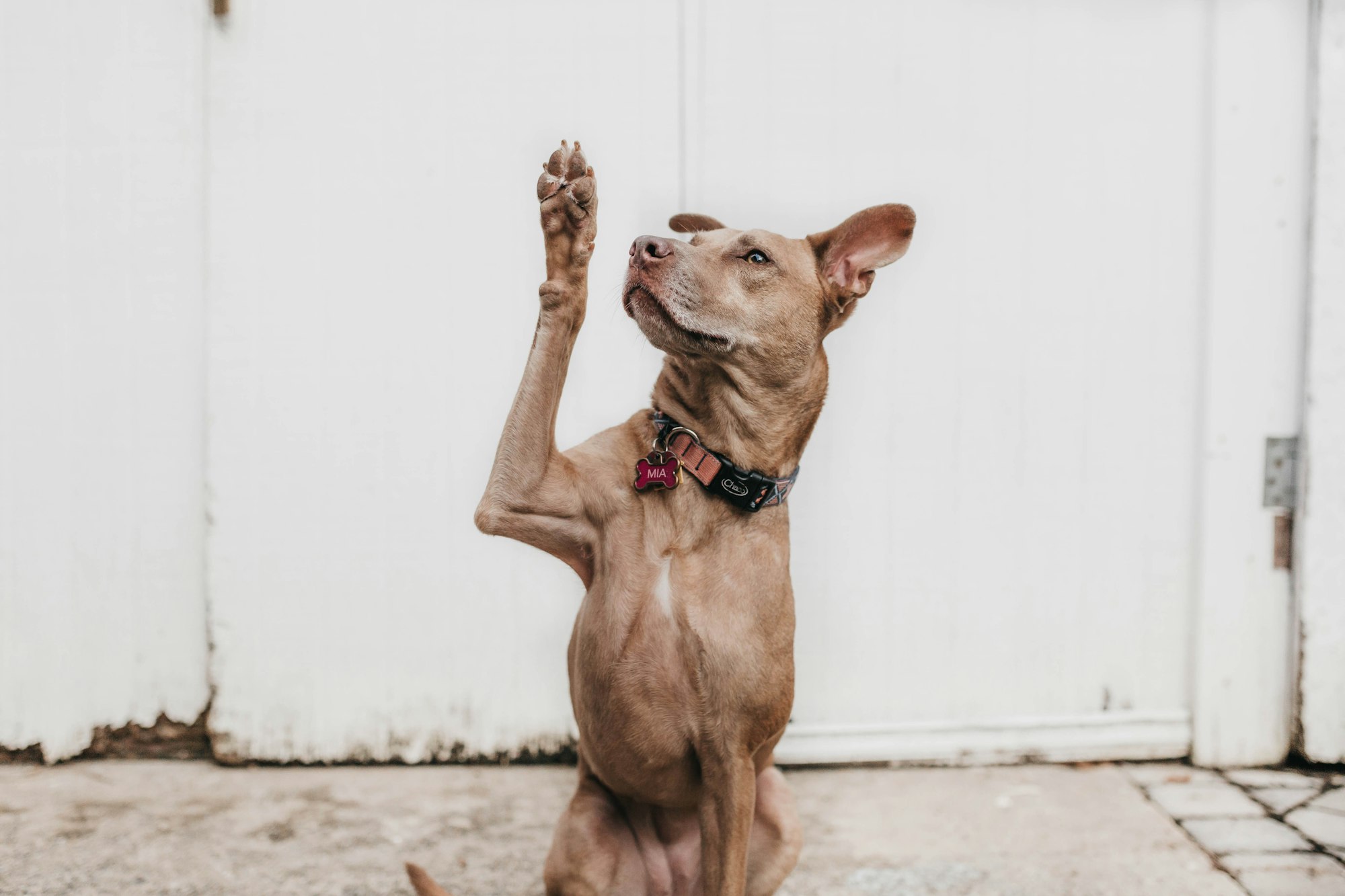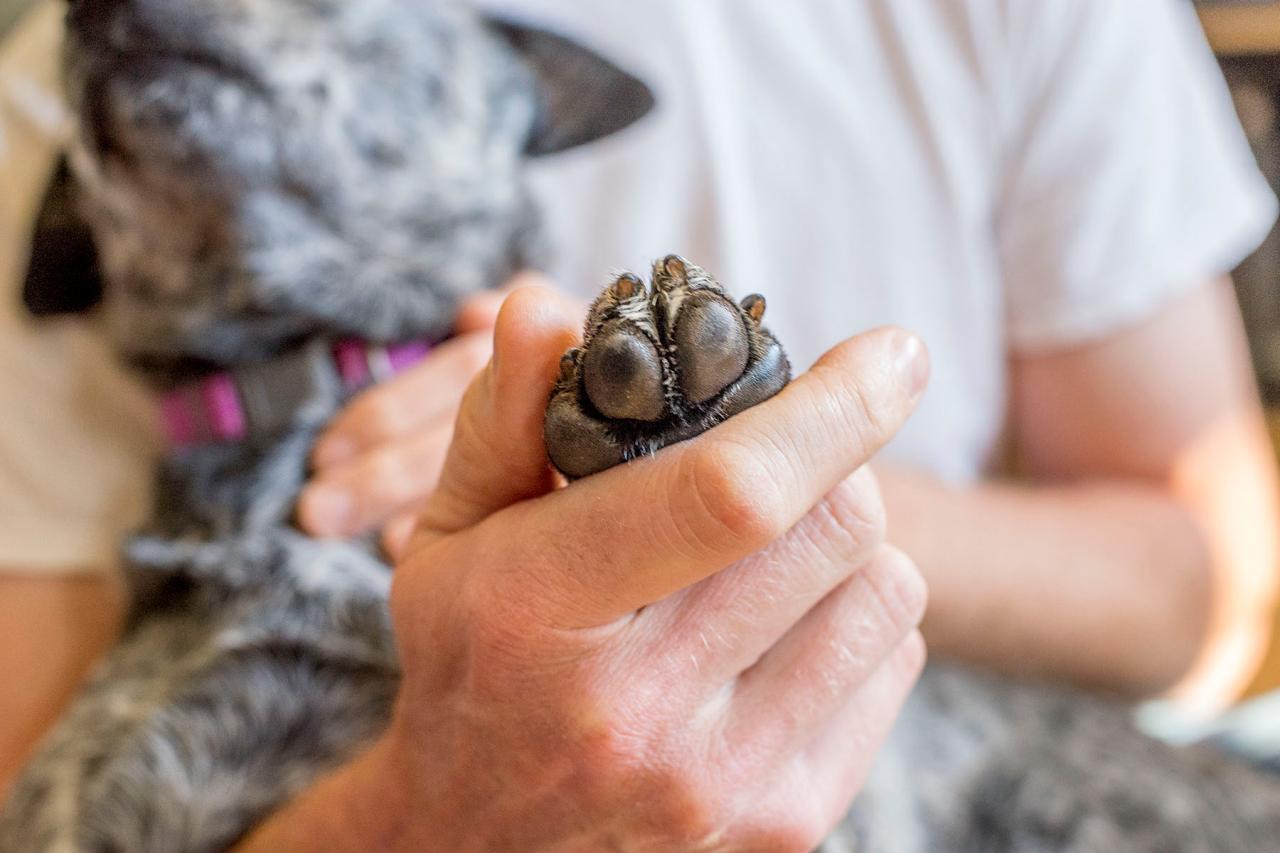When you pick up a pencil, you naturally gravitate towards using your left or right hand. Most humans have a dominant hand for everything they do, while the other hand is really only suitable for basic tasks.
Dogs, on the other hand, are a little bit different. If you’re trying to teach your furry friend to “shake” or give you a “high-five” on command, you might be wondering if they have one paw they prefer to use over the other.

A fair amount of research has been done to determine whether dogs exhibit the same type of “handedness” (known in the science world as “laterality”) as humans. The good news is that the tests performed by researchers can be replicated with your dog at home, so you can try to figure out if your pup is right-pawed or left-pawed.
Testing for Paw Preference
A variety of tests have been done to see if dogs have a preferential paw. They all require observation and can sometimes be inconclusive if the dog uses both of its paws during the exercise.
Most researchers look for the paw the dogs instinctively use at the beginning of the exercise as a way to identify their dominant paw.
The Kong Test
If you’re a dog parent, you’re probably very familiar with the Kong toy. This is one of the most popular tests for determining if a dog has a preferred paw because the dog will use a paw to stabilize the toy while trying to get the food out of it.
Researchers will watch the dog using the Kong and count the number of times they use their right paw, left paw, and paws simultaneously. If a dog uses one paw significantly more than the other, researchers determine that it has a preference.
While 90% of humans are right-handed, 10% are left-handed, and only a select few are ambidextrous, the Kong Test has shown that there is an equal number of dogs who are right-pawed, left-pawed, and have no preference between paws.
The First Step Test
Another method of testing for a dog’s preferred paw is setting them down and seeing which paw they take their first step with.
Many scientists feel this test is more conclusive than the Kong test because it eliminates the food variable. Official studies are done by setting a dog down fifty times and recording which paw it steps with first each time.
Unlike the Kong test, which had mixed results, the first step test has concluded that more dogs prefer their right paw.

The Tape Test
The tape test is performed by sticking a small piece of tape on a dog’s nose and observing which paw it uses to get the tape off. This test is the least recommended by scientists because it makes dogs disregard which paw they use and focus on getting the tape off at all costs.
Although the tape test isn’t the best method of determining paw preference, it has been used for official studies, which is why we included it here. If you have a relatively calm dog that won’t become frantic when tape is placed on its nose, then it should be fine for you to try the test at home.
The Lift Paw Test
This test is performed by asking a dog to give you its paw. The lift paw test is probably the simplest means of testing paw preference, and it helps you teach your dog a new trick!
The idea for using the lift paw test came from the idea that dogs will automatically present the paw they like more.
Do Dogs Always Go For the Same Paw?
Deborah Wells, a laterality researcher at Queens University, Belfast, conducted a study to see if dogs always used the same paw more than the other.
Think about it—as humans, we use the same hand to write, hold a toothbrush, use a knife, and anything else that requires careful maneuvering. Wells wanted to know if dogs were the same way.
Wells and her colleagues used the same 32 dogs and observed their preferences in the four different tests discussed above. Their findings were published in Behavioural Processes in 2018.
The researchers found that a dog’s paw preference was task-specific. Dogs that used their right paw the most to stabilize their Kong would turn around and use their left paw to take more first steps.
Your dog may have its own style of ambidexterity, so it might be fun to perform multiple tests to get a better picture of which paw it likes to use more.

Does Paw Preference Tell Us Something About A Dog’s Personality?
More research is needed in this department to confirm hypotheses, but it is believed that dogs with a strong preference for one paw or the other have certain personality traits.
Researchers are interested in paw laterality because of the implications it could have about a dog’s feelings. Animals with a tendency to use their left paws are more active in the right hemisphere of their brains and are more inclined to have heightened fear responses than right paw-dominant animals.
In a previous study, Wells and her colleagues determined that dogs who preferred their right limbs were more positive and optimistic than dogs who favored their left limbs. Researchers stated that ambilateral dogs were more receptive to strangers than those with a dominant paw in a different study.
So, the jury’s still out on the relation between a dog’s paw preference and personality.
What About My Dog?
You already know your dog better than most, so if you want to see if they have a paw preference, repetition is the name of the game.
No matter which test(s) you perform, you’ll have to repeat it around fifty times to get any conclusive results.
You can perform one of the tests used by researchers or develop your own test tailored to your pup. Maybe you hide a treat in your hand and see which paw they put on your hand first. Or you can observe which side of limbs they primarily use to get an itch.
Your dog might have a preferred paw, or they might not. Either way, you can teach them to “shake” or “high-five” with practice.






